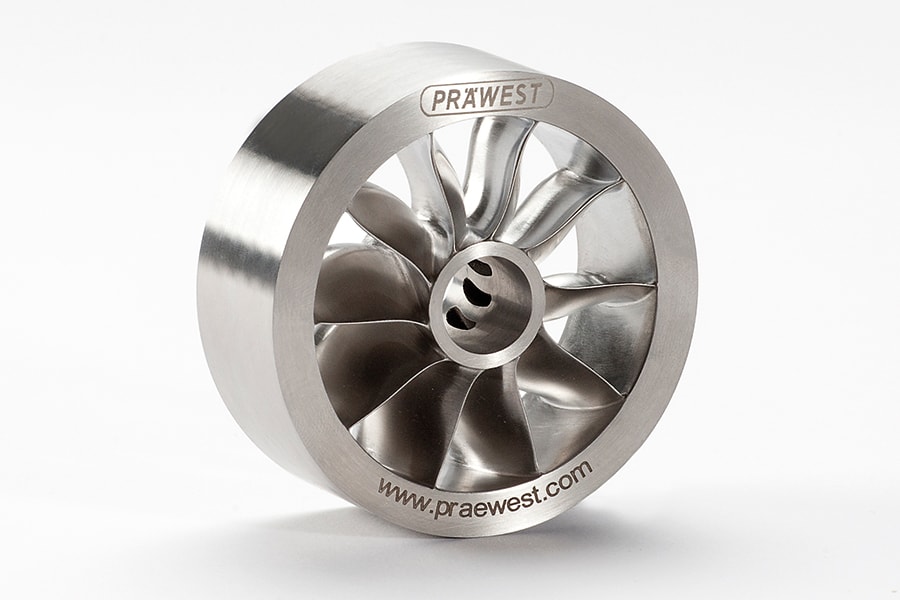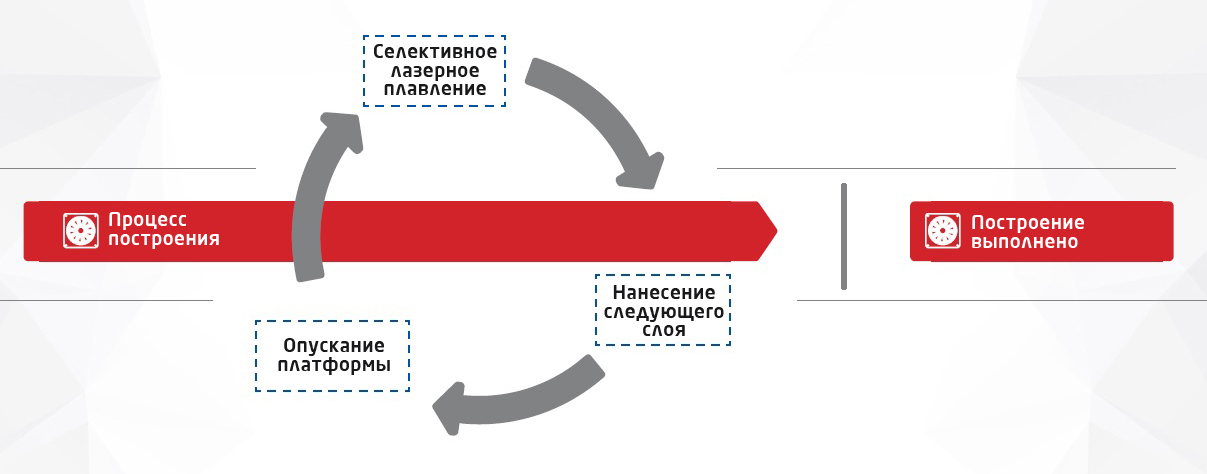3D printing with metals: 5 obvious advantages on a practical example

SLM-made swirl. With the mass production of such parts, the reduction in the pre-production stage can reach 50%
Much has been written about the features and benefits that the selective laser melting technology (SLM) is capable of providing to the enterprise. The advantages of such innovative methods are best demonstrated by practical examples, and in this article we describe in detail the technological chain of additive production based on a project in the field of power engineering. Using the metal 3D printer SLM Solutions, the German company PRÄWEST manufactured a swirler, which made it possible to significantly increase the fuel injection efficiency in a stationary gas turbine.
The use of SLM-technology in the manufacture of swirl
The SLM technology was chosen by PRÄWEST to facilitate the production of a modified fuel injector. This so-called "swirler" is used for injection and uniform distribution of fuel in the combustion chamber. Crucial here is to ensure fast, even and complete combustion of the fuel due to its optimal distribution.
')
The swirler is made of an alloy based on nickel IN 718, which is extremely resistant to corrosion. When using the SLM process, the typical value of tensile strength (Rm) for this material is 1230 N / mm².
The use of SLM technology in the manufacture of a swirl provided a reduction in production costs by more than 65%
Stages of the process of selective laser melting: how it happens
The whole technological chain of manufacturing can be divided into three stages: preparation for printing, the main process and post-processing.
1. Preparing for 3D printing

The basis for each component is a three-dimensional CAD-model, which is created individually, taking into account the needs and requirements of the customer. After that, the data is transferred from the CAD software tool to the Magics software .
At the next stage of data preparation, a 3D printer and materials are selected , and the position of the components on the construction platform is specified. Components can be placed side by side, inside each other (insertion) or above each other (packaging). Improved product layout in combination with the possibility of simultaneous production can significantly reduce costs, because, depending on the component, you can significantly reduce installation time and auxiliary procedures.
Creating supports helps to ensure stable fixation of the component and heat dissipation during the process of selective laser melting.
After that, the SLM Build Processor (postprocessor) program automatically or on the basis of the set values generates such process parameters as exposure vectors, exposure speed, laser power and distance between shading lines. The selected parameters determine the thickness of the component layers, the accuracy of the surface and the mechanical properties. After the component is “sliced” into separate layers parallel to the building platform, these layers are generated - this process is called “hatching”. The layer thickness (usually 30–50 µm) significantly affects the quality parameters of the component, such as dimensional accuracy and surface quality, as well as the duration of construction. Simultaneously with the preparation of data, the preparation of a 3D printer is also being carried out.
2. The main process

The build file using the Windows-based user interface is loaded into an additive installation , after which the component is built layer by layer. The construction process is a cyclical repetition of the operations of applying a layer of powder and exposing it to a laser. The powder particles are fused with each other along the contours of the component and on those surface areas that were determined at the preliminary stage.
Then the platform is lowered onto the thickness of one layer, and another layer of powder is applied. This sequence of actions is repeated cyclically with the combination of the geometries of the current layer with the geometries of the previous layer. When the last component layer is reached, execution of the build session is completed.
3. Postprocessing

Unused powder is removed from the build chamber and sieved for reuse. The component platform is removed from the 3D printer; the remaining powder is sucked off using a vacuum device. At this stage, depending on the requirements of the component, heat treatment can be applied.
After separation of the component from the platform , the support structures inside the flow channel are removed manually. At the next next stage, the surfaces are manually ground to the required roughness in the channel; alternatively, the surface can be machined.
Then a finishing turning is performed taking into account the tolerance on the dimensions of the component and the required final outer contour. This removes all the support that may still remain on the external circuit. The final post-processing operation is final testing. At this stage, using various measuring equipment, coordinate measuring machines and 3D scanners , the component is checked for compliance with the requirements specified in the customer’s drawing and model.
Advantages and features of selective laser melting
Cost reduction
The use of SLM technology in the manufacture of a swirl provided a reduction in production costs by more than 65%. The elimination of the two stages of the traditional process also made it possible to reduce the manufacturing time by more than one percent.
Functionality
Freedom in working with geometry when designing products is one of the main features of the SLM technology, which allows to improve the functionality of components. In this example, selective laser melting helped optimize the geometry of the swirler.
The internal lattice structure and additional channels allowed for functional optimization and integration. Thanks to the lattice structure, it was possible to reduce the mass of the component and at the same time reduce the amount of necessary materials and resources.
Efficiency
The widest opportunities for making design changes also allow you to integrate new functions. In this example, the efficiency of the gas turbine system was increased. Thus, the high flexibility of the SLM technology helps to increase the efficiency of the component. Production without tooling allows you to make design changes at lower costs and shorter production time. Due to this, the process of selective laser melting is ideal for both piece and mass production.
Flexibility
SLM technology makes it possible to make design changes that would not be possible using traditional production methods for technical or economic reasons. In the process chain of selective laser melting, these changes require less time and money, which makes flexible modifications more economical and efficient.
Time saving
One of the main advantages of SLM technology is a reduction in manufacturing time due to the integration of production through the use of a process that eliminates the need for additional steps such as fixing the part and setting. With mass production, the reduction in the pre-production stage can reach 50 percent. Also, another type of auxiliary production processes is practically eliminated - preparation of data that requires considerable time and money.

PRÄWEST: 70 years of success
PRÄWEST: competitive manufacturer using additive technologies
PRÄWEST was founded in 1945 and over the years of its activity has become a dynamic and innovative enterprise. Being engaged in contract manufacturing in the aerospace and turbomachinery industries, the company eventually began to specialize in refining the structures of complex components. Its state-of-the-art equipment fleet includes tools for milling, turning and grinding work, including 130 CNC milling machines and 24 robots.
PRÄWEST constantly invests in new technologies in order to satisfy the needs of its customers, and one of its areas of interest is the simultaneous five-coordinate processing of complex components. These systems allow processing in five axes of components with a diameter of up to 2500 mm and a weight of up to 15 metric tons.
One of the priorities for PRÄWEST is to provide a high level of customer service. Highly qualified service personnel of the company provides constant round-the-clock support, solving a wide range of problems arising from customers. The success of the company is based primarily on establishing long-term trusting relationships with customers and suppliers, seeking to associate the word PRÄWEST only with the highest level of service.
Material provided by SLM Solutions
Source: https://habr.com/ru/post/449934/
All Articles